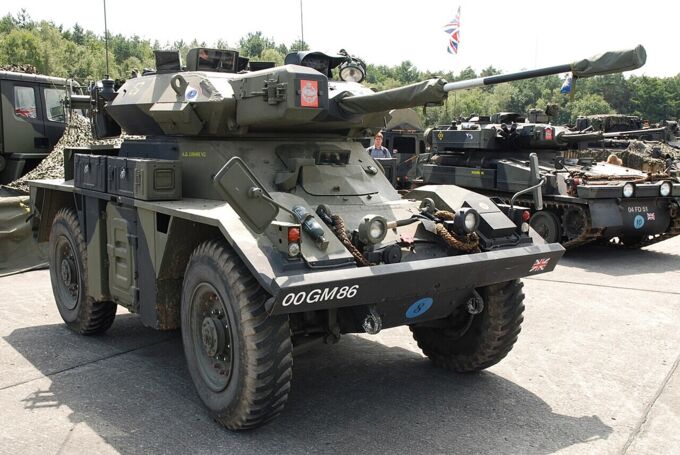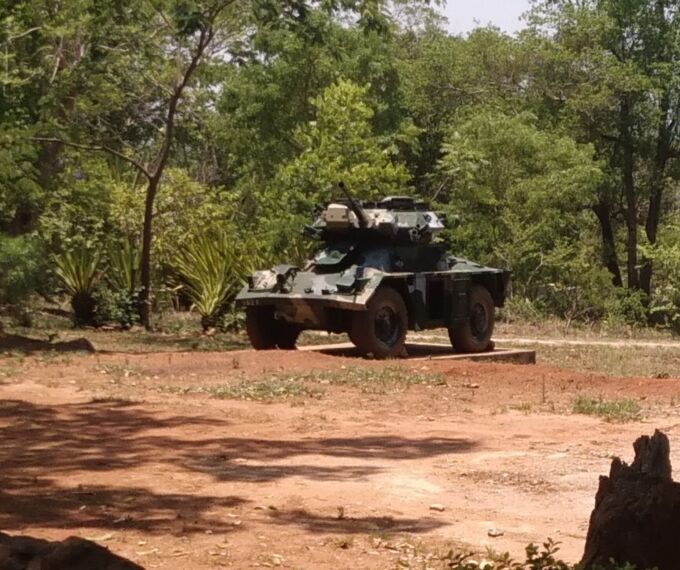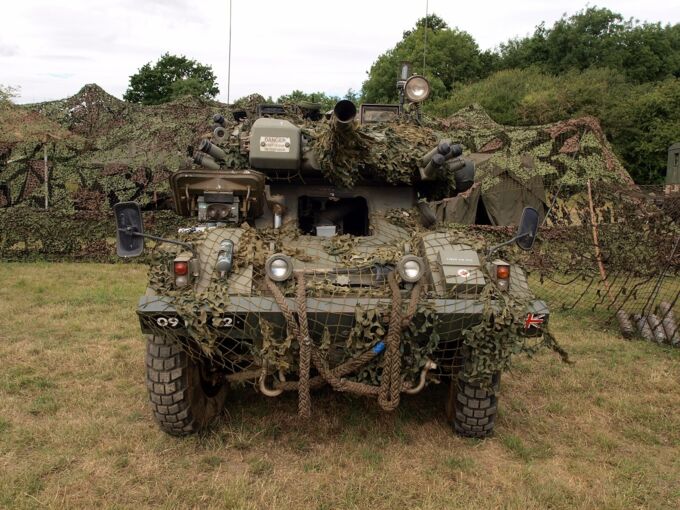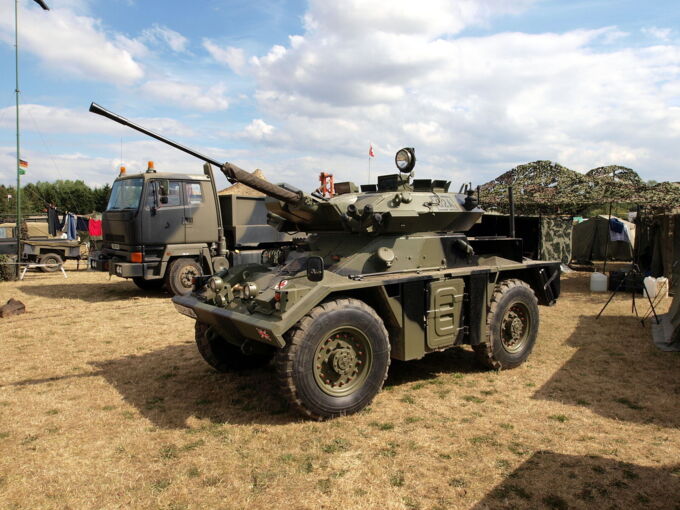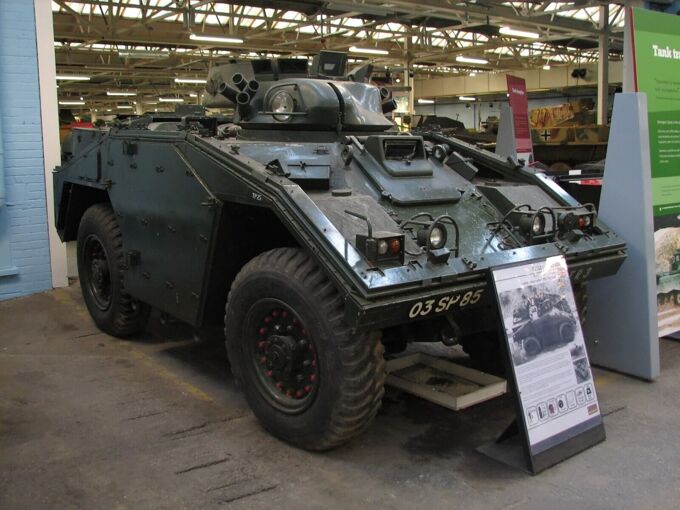The FV721 Fox Combat Vehicle Reconnaissance (Wheeled), or simply Fox, was a light armoured car/reconnaissance vehicle produced by ROF Leeds and used by the British Army from the early 1970s up until 1994.
History of the Fox
The Fox was devised by the Daimler company in 1965. It was planned to replace the Ferret, Saladin, and Saracen armoured cars for reconnaissance and scouting purposes and have a capable anti-tank weapon system, suitable for finding and effectively destroying light tanks or armoured cars. The first prototypes started being produced by the Royal Ordnance Factory, Leeds in 1967, and in the following two years, 15 FV721 (CVR(W)) prototypes were made.
In 1973, the vehicle was taken into service by the British Armed Forces. In 1986, the production and marketing rights to the Fox were handed over to the Vickers manufacturing company. The Fox was deployed in West Berlin as a peacekeepers' vehicle and never saw combat. In total, 321 Foxes were manufactured during the 12 years from 1973-1985. 75 of those were sold to Nigeria (55) and Malawi (20) and are still in active use, unlike that of Britain, which withdrew the Fox from service in 1993/94. The later variant of the Fox, the Sabre, which was basically a Fox turret on a Scorpion light tank hull, were used all the way up to 2004 by the British Army.
The Armour of the Fox
The hull and the turret of the Fox were made out of aluminium and designed to withstand heavy machine gun fire (12.7 mm) and ballistic fragments. This decision resulted in the vehicle being extremely light, weighing a mere 6.12 metric tonnes. The low weight of the Fox allowed it to be transformed into an amphibious vehicle in two minutes, as well as being transported and deployed into battle from an aircraft. However, while most modern fighting vehicles have been designed to have nuclear, biological and chemical protection, the Fox wasn’t.
The Armament of the Fox
As the Fox was meant to fight either infantry or other IFVs, it had to be armed with a cannon. The team of Daimler specialists chose a 30 mm L21 RARDEN autocannon, as well as a co-axial FN MAG machine gun. The 30 mm is definitely a formidable force against IFVs of the late 20th century. A total of 99 rounds could be carried on the Fox. The autocannon is capable of firing APSE (Armour Piercing Secondary Effect) rounds, which were filled with white phosphorous, traditional HE rounds, and high-velocity APDS rounds. Some variants of the Fox were also able to carry a MILAN ATGM.
Variants of the Fox
Many variants have been conceived for the Fox, but only some of them ever got produced. Nonetheless, they are all quite fascinating:
- FV722 or Fox-Vixen: One of two variants, which were produced. Had a small standard GPMG turret, autocannon was replaced for a machine gun. Proposed to be used in Northern Ireland during the Troubles. Some sources call it Fox-Polecat. Never saw use. Only one remains intact in the Bovington Tank Museum.
- Fox “25”: Never got produced nor made in metal. Planned to be outfitted with a Sharpshooter turret with a 25 mm Bushmaster autocannon.
- Fox MILAN: I found no evidence for this variant being taken into service, but nonetheless, a lot of photos exist on the Internet of this specific variant. It was outfitted with a different turret design, keeping only the light machine gun. The main weapon is a twin MILAN ATGM launcher. The intended use of the vehicle was a light tank destroyer.
- Fox-Scout: Proposal for a convoy escort vehicle. Same configuration as the previous-mentioned Fox MILAN variant except the missile launcher. Only a prototype was ever built.
- FV432/30: A Fox turret on a FV432 hull. 13 such vehicles were made. Were used by the Berlin Infantry Brigade in West Berlin during the late stages of the Cold War. Never saw combat.
- Sabre: A Fox turret on a FV101 Scorpion hull. The most produced of the whole group: 325 units were produced for UK and several hundred for export to Belgium, Honduras and Jordan. In service for the British Armed Forces from 1995 to 2004.
Service beyond the Army
Some Foxes remain up and running, though not in military use. Some enthusiasts have even taken their own vehicles to various shows. One such person is Nick Mowbray of England, who has bought a Fox, restored it and has appeared on the local Capel Military show of 2023. He has brought together the original crew of a Fox, including himself.
I hope this article has been interesting to read. Have a nice day!
